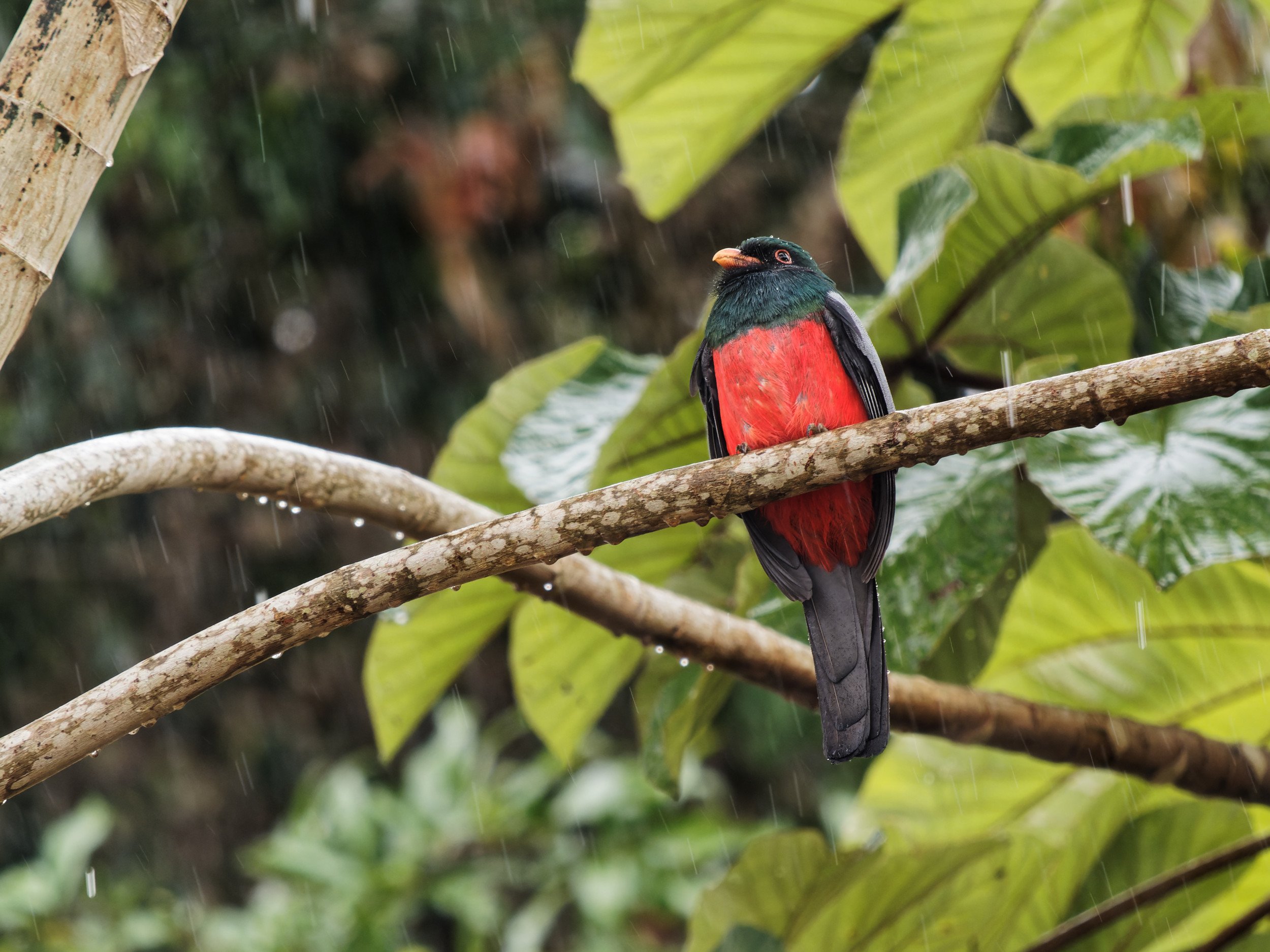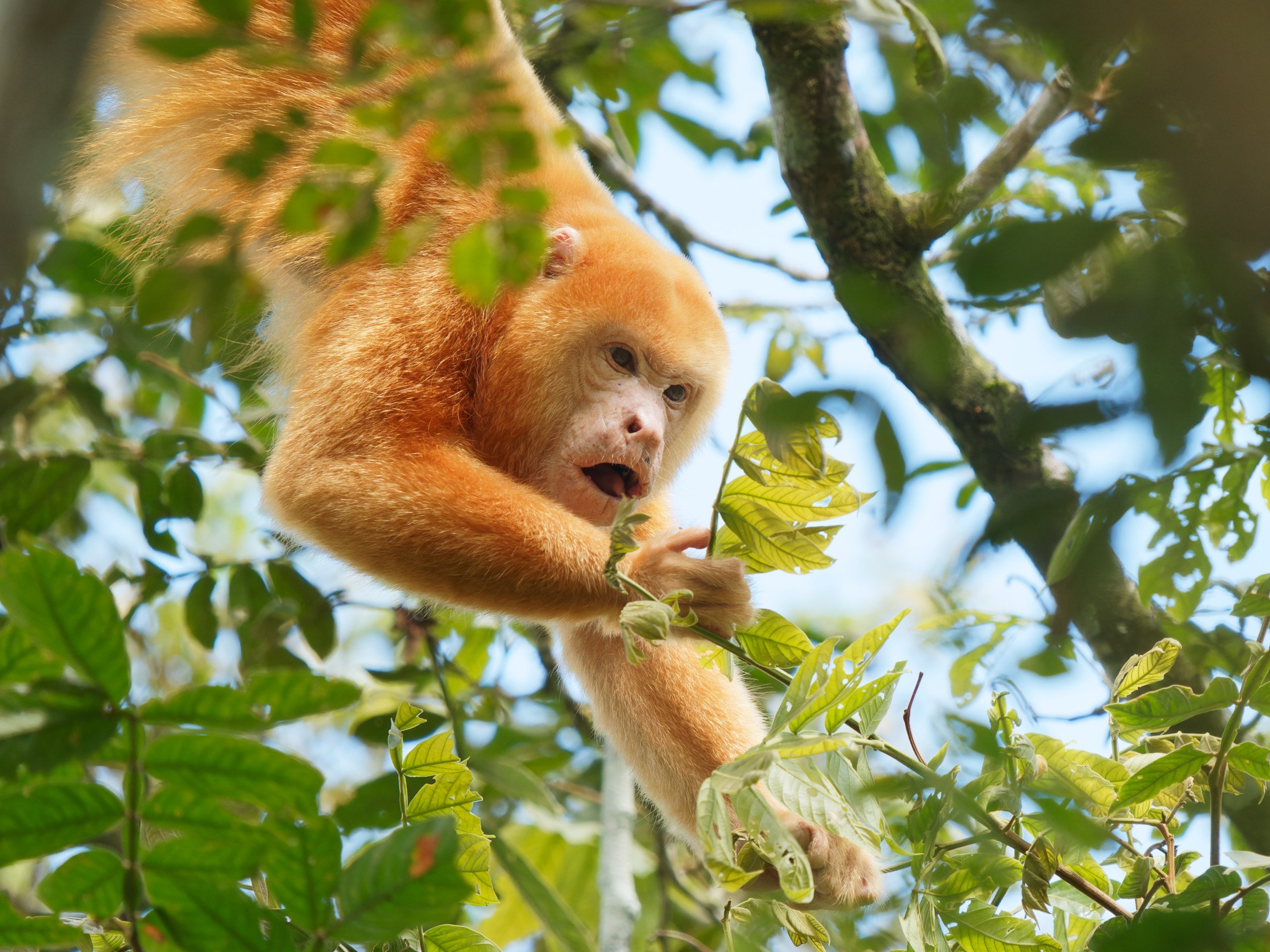OM-D E-M1X and 150-400 F/4.5 Pro for Wildlife Photography: Long-Term Review Update
I have shot with the E-M1X for about two and a half years now, and since having acquired the 150-400 and having the opportunity to return to the beautiful Costa Rica with this kit, I thought it was time I updated my review of the camera and lens. I estimate that I have probably spent about 1000 combined hours using the camera and maybe 150 of those with the lens.
TLDR: Despite approaching three years old, which is arguably a long time in the mirrorless camera space given the current pace of advancements, the E-M1X continues to be a solid companion for wildlife photography. Paired with a large lens like the 150-400 the square body makes complete sense. The camera has been sturdy and dependable even in torrential downpours, and still looks as new as the day I acquired it. The 150-400 lens is extremely flexible in a wide variety of use cases, and easily one of the most versatile lenses I have ever used for wildlife subjects.
Shooting the E-M1X in Costa Rica
In this brief blog update, I wanted to share a few of my experiences using the camera in Costa Rica. Costa Rica is a beautiful place with a lot to offer to the wildlife and photography enthusiast, but it is also challenging to photograph as one often finds themselves in situations with low light and rain. Fortunately the E-M1X is up to the task with solid build quality and great stabilization.
The following are some of my latest thoughts on the pros and cons of using the E-M1X.
Pros
Bird AI. Bird AI is a very welcome feature on this camera given my strong interest in birds. Since its introduction in firmware updates, I have been using it almost exclusively for subjects like birds in flight. That’s because I no longer need to rely on placing focus points in the correct place during BIF (bird in flight) shooting, as the camera will do it for me. Anyone who has tried shooting BIFs against a contrasting background (i.e., leaves and foliage), knows how easy it is to lose the bird and focus on the background. The keeper rate is far higher with bird AI in such situations. Most of the time I leave the camera in single point autofocus, and then flip the function lever to switch between Bird AI tracking and back again. Whereas before Bird AI I would use 5x5 focus area and be forced to have my subjects in the middle of the frame, Bird AI frees me up to modify the composition in real-time even with fast moving subjects like BIFs.
The speed. The speed and operation of the E-M1X is still impressive three years later. Changing settings is instantaneous, frame rates are high and with minimal blackout and low rolling shutter. In most* areas it does not hesitate, and is thus a great companion for action-type shooting. (*more not this later)
The ergonomics. The camera feels absolutely great in the hand and all the buttons and dials are essentially baked in muscle memory for me now. It helps that button placement is intuitive, with the exception of the awkward on-off button placement.
The build quality. The camera still looks new despite being used extensively in the field and set down into the back of car. The grip still looks essentially new. The weather sealing has been flawless. The choice of materials and built is really spot-on with this camera.
Cons
There are a few minor items that bother me in practical use of the camera that I hope are updated in future OM-D bodies.
EVF. Although it is pleasingly large, the dynamic range of the EVF panel leaves a lot to be desired. The resolution is too low to judge critical focus in real time, and the colors are washed out in comparison to the actual image being acquired. It does the job and refreshes quickly which is useful for fast panning action, but gauging critical sharpness and evaluating exposure is challenging. Olympus hasn’t really updated its EVF display technology since the original E-M1. It is really starting to show compared to other cameras I’ve used, which are only getting better. I am also frustrated sometimes that I cannot view the panel while wearing polarized sunglasses (it causes black lines to show up on the interlaced panel). It may sound nuts to wear sunglasses while shooting because it messes up perception of proper exposure, but I often found myself shooting from a boat or other extremely sunny places where sunglasses are an absolute must if I want to protect my eyes from sun and wind. In these situations, I often leave the camera in ISO auto and make sure I’m prepared to very quickly raise the camera to capture something like a bird in flight. Needing to remove sunglasses wastes precious time that I could otherwise be capturing a fleeting scene.
Autofocus performance. The camera focuses incredibly quickly and reliably and gets AF in the ballpark even in low light, but the shot-to-shot variation, even while shooting in good light, is higher than I would like. Even in great lighting conditions with high contrast, I have found the camera has some shot-to-shot focus variation. For example, in a sequence of twenty shots of a static subject in good lighting, 80-100% will be acceptably sharp, 50% will be near perfect sharpness, and 20% or less will be tack sharp. No matter of adjusting settings, toggling AF-S, sensitivity modes, shooting from a tripod, etc., seems to make any appreciable difference, and the phenomena is immediately obvious when I compare it do other cameras. My workaround has been to shoot many more frames than I need to (sometimes 30 or 40 of a single composition), and pick the sharpest. The end result is more photos to cull in post, since I don’t completely trust it. When I say tack-sharp, I am really nitpicking here because the average person might consider acceptably sharp to be completely sufficient. Personally, I’ll throw out everything but the most tack sharp images during culling if I have a sequence to choose from.
Joystick operation. When I change the focus point using the joystick, there is a perceptible delay in movement of the focus square that is immediately noticeable when I am shooting it alongside other cameras and it drives me a little nuts sometimes. I wrote about this when I originally reviewed the camera, and since then, sadly no firmware updates have been made to address it. I always found this surprising given that the camera is heavily marketed towards sports, action, and wildlife and any perceptible delay can lead to missed shots. I think the issue stems from the display taking its time to show all the available focus points each time the focus points are adjusted, and I wish this was a setting I could toggled off. I have no need to know where all of the available focus points are, I just need to know where the focus point actually is.
I wrote a lot about drawbacks above, but this should not overshadow what I perceive as the benefits provided by this camera. At the end of the day, no camera is perfect and each have their pros and cons. I consider the downsides I’ve mentioned minor annoyances that do not detract from the overall positive experiences I have had using the camera for an extended period of time. Of course with the smaller format sensor one needs to be more conscious about noise and ISO, but this is something I’ve adapted to in use. Amazing noise reduction software like Topaz AI and DXO Photolab also make the noise concern a lot less worrisome. If the above issues in the con section were addressed, I would be hard pressed to find anything significant to complain about. I think that speaks to the staggering amount of tech and design considerations Olympus put into the camera. I have made some of my personal favorite images using this and other Olympus cameras, and I remain excited about the potential of future OM-D system cameras to further build on the strengths of this format.
150-400 F/4.5 Pro Lens
The 150-400 lens was one that I dreamed about for a long time after it was first rumored as being in development. Now that it is actually a thing, I would say that it meets and even exceeds expectations in a lot of ways.
Pros
Weight and build quality. I remain thoroughly impressed with how light this lens is while still maintaining premium build quality. When using the lens, it essentially feels like a full-frame 70-200 F/2.8, not a super telephoto. I still utilize a monopod on long days when needed, but I have no problems carrying this lens all day handheld. There is never a second thought when choosing to take it out for the day.
Versatility. This lens is one of the most versatile lenses for wildlife photography that I have ever used. With the use of optional teleconverters, one can have a 35mm format equivalent range of 300-2000mm covered. The fixed aperture also means that ISO stays fixed and is never a worry when zoom is employed (this can be a challenge sometimes when shooting a variable aperture lens in manual shooting mode). The huge range combined with amazing close-focus abilities which make pseudo-macro type images possible make this a really unique and flexible lens to have in the quiver. I really do find myself using the full range of the lens.
Image quality and sharpness. For the most part, the lens renders what I would consider prime-like image quality across a huge zoom range. The internal teleconverter seems to have little or no penalty on sharpness and the benefits of the built-in TC are most obvious when the zoom is at the maximum, giving that extra bit of reach. My only question would be how much more image quality might be improved by a new generation sensor that improves low-light noise performance and dynamic range. While I no longer own the 300mm Pro lens, I would also be curious to compare imaging performance between the two. Based on my subjective review of past images taken with the 300mm Pro and this lens, I would guess that the 300 has the slight edge in sharpness across the frame whereas the 150-400 has the edge in bokeh characteristics. Maybe some day I will loan the 300 pro to see if these anecdotes match reality.
Cons
Lens coating. I learned the hard way that the coating on the front element are maybe a little too prone to scratches. I really have no idea how it happened, but I’m guessing some pebbles got kicked up into the lens while walking resulting in some hairline scratches. Of course these have zero impact on the final image, and the goal was to use the lens not look at it, but I like to care for my kit and it was a little disappointing to see. In hindsight I would have put on a protective UV filter over the front element
There are really no other drawbacks I can note on the lens at this stage. It focuses lighting fast, feels great in the hands, zooms and focuses beautifully, has been rock solid in operation even in inclement conditions, and is relatively lightweight for what it is. It is clear that a tremendous amount of thought and engineering went into the optic, and I’m interested to see whether new sensors can squeeze even more performance out of the image output.
























